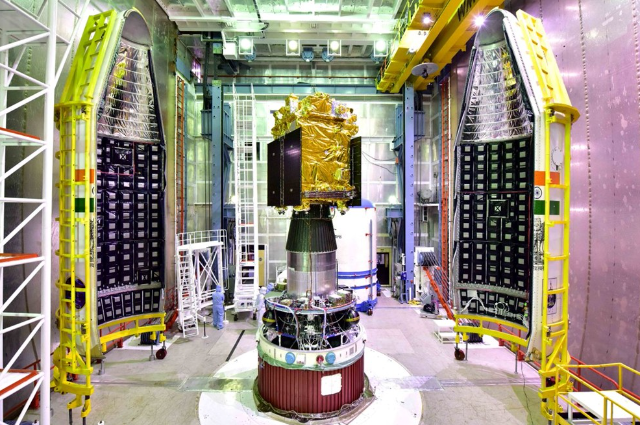India's burgeoning technical capabilities and the passion of its modern scientists for lunar exploration inspired ISRO to launch Chandrayaan-1, the country's first mission to the Moon. The mission's primary goals were to enhance our understanding of the Moon's origin and evolution, improve India's technological expertise and offer challenging opportunities for young scientists in planetary sciences.
Expert Consensus and Government Approval
In 2003, a group of over 100 distinguished Indian scientists from various fields such as planetary and space sciences, earth sciences, physics, chemistry, astronomy, astrophysics, engineering and communication sciences reviewed the Task Team's study report. They unanimously recommended that India should undertake a lunar mission, especially given the renewed international interest and numerous exciting lunar missions planned for the new millennium. They also noted that such a mission would boost basic science and engineering research in India and challenge ISRO to expand its capabilities beyond geostationary orbit.
In November 2003, the Government of India approved ISRO's proposal for the Chandrayaan-1 mission. This approval marked a significant step in India's space exploration efforts, setting the stage for the country to make substantial contributions to lunar science and technology.
Chandrayaan-1 represents a milestone in India's space journey by reflecting the nation's ambition to explore beyond Earth and its commitment to advancing scientific and technological frontiers. The mission not only aims to uncover the mysteries of the Moon but also to inspire and challenge the next generation of Indian scientists and engineers.
Successful Halo Orbit Around Sun-Earth L1 Point
On 2nd July this Tuesday, India's first solar mission the Aditya-L1 spacecraft successfully completed its first orbit around the Sun-Earth L1 point, according to a statement from the Indian Space Research Organisation (ISRO). This marks a significant milestone for the mission by highlighting India's growing capabilities in space exploration.
Mission Overview and Launch
The Aditya-L1 mission, an Indian solar observatory positioned at the Lagrangian point L1 was launched on September 2 of the previous year. It reached its designated halo orbit on January 6, marking the beginning of its scientific operations. This orbit is crucial as it allows the spacecraft to continuously observe the Sun without any interruptions caused by Earth's shadow.
Orbit Dynamics and Maintenance
In its halo orbit, the Aditya-L1 spacecraft takes 178 days to complete one full revolution around the L1 point. This specific orbit enables the spacecraft to have a stable position relative to the Sun and Earth. However, it is not without challenges. Various alarming forces can cause the spacecraft to deviate from its intended path thereby requiring constant monitoring and adjustments.
Station-Keeping Manoeuvres
To maintain its precise orbit, the Aditya-L1 spacecraft underwent two crucial station-keeping manoeuvres. The first manoeuvre was performed on February 22 and the second one took place on June 7. These adjustments are essential to ensure the spacecraft remains in its optimal orbit for continuous solar observation and data collection.
The successful completion of its first halo orbit marks a major achievement for the Aditya-L1 mission and ISRO. This mission not only enhances our understanding of solar dynamics but also demonstrates India's advanced capabilities in space technology and exploration. The ongoing operations and future observations by the Aditya-L1 spacecraft will provide valuable insights into solar phenomena and their impact on space weather.
Aditya-L1 Successfully Enters Second Halo Orbit
- Third Station-Keeping Manoeuvre Achieved: The Aditya-L1 spacecraft successfully completed its third station-keeping manoeuvre today, ensuring its transition into the second halo orbit around the L1 point. This critical manoeuvre marks a significant step in the mission's journey by maintaining the spacecraft's stable orbit for continuous solar observation.
- Complex Dynamics and Perturbing Forces: The journey of the Aditya-L1 around the Sun-Earth L1 Lagrangian point involves complicated dynamics. Understanding and modelling these dynamics is essential for the mission's success. The spacecraft is subjected to various perturbing forces which can affect its trajectory. Accurately determining these forces is crucial for planning and executing precise orbit manoeuvres.
Validating Advanced Flight Dynamics Software
Today's manoeuvre not only secured the spacecraft's path but also validated the state-of-the-art flight dynamics software developed in-house at URSC-ISRO. This advanced software played a pivotal role in the Aditya-L1 mission by allowing ISRO to model complex dynamics accurately and plan effective orbit adjustments.
The successful transition into the second halo orbit emphasizes the technical expertise of ISRO's team and the robustness of their flight dynamics software. As Aditya-L1 continues its mission, it will provide valuable data on solar phenomena by contributing to our understanding of space weather and enhancing India's reputation in space exploration.
Detailed Trajectories of Aditya-L1 explained by ISRO
- Understanding the Trajectories: ISRO provided a detailed explanation of the trajectories involved in the Aditya-L1 mission. The blue trajectory represents the spacecraft's orbit around the Lagrangian point L1. This trajectory is three-dimensional and it was shown that its projection onto the X-Y plane.
- Station-Keeping Manoeuvres: The figure also marks three station-keeping manoeuvres, labelled SK#1, SK#2, and SK#3, performed by the Aditya-L1 spacecraft. These manoeuvres are critical for maintaining the spacecraft's precise orbit. The final thruster firing designated as SK#3 and carried out on July 2 successfully repositioned the spacecraft into the required orbit.
Importance of Accurate Thruster Firing
ISRO highlighted the importance of accurate thruster firings. If the final firing had not been precise, the spacecraft would have drifted away following a trajectory shown in green in the figure. This deviation would have taken the spacecraft off course from its intended orbit.
Coordinate System
The X-Y axes in the figure are labelled in kilometres with the Lagrangian point L1 positioned at the origin. This coordinate system helps visualise the spacecraft's movements and the precise adjustments needed to maintain its orbit.
ISRO's detailed explanation and visualisation of the Aditya-L1's trajectories emphasise the complexity and precision required in space missions. The successful manoeuvres ensure that the spacecraft remains on its intended path by allowing it to continue its mission of solar observation.
. . .
References:

